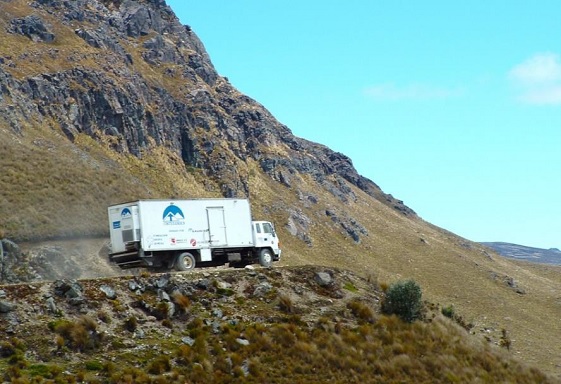Anaesthesia for mobile ambulatory surgery in rural Ecuador - Phil Sparks, University of Bristol, 2018
I spent my eight-week elective with the Cinterandes Foundation. This charitable organisation was founded in 1994 and provides ambulatory surgical care to rural Ecuador using a truck equipped with an operating theatre (a mobile surgical unit, MSU). Cinterandes is based in the city of Cuenca, the third biggest city in Ecuador.
For one week each month they travel to a rural community and perform simple surgeries such as abdominal hernioplasties and laparoscopic tubal ligations.
While in Cuenca, the truck is also used for ambulatory surgery on Tuesdays and Thursdays. During my elective with Cinterandes my time was divided between working on a research project, assisting with the mobile surgical programme and clinical placements in Cuenca.
Research project
I completed a retrospective cohort study investigating the incidence of intra-operative anaesthetic complications in the MSU and comparing them with published data on the incidence of intra-operative anaesthetic complications in hospital ambulatory surgery. This work was submitted to the Association's Annual Congress 2018 for consideration for presentation.
Mobile surgical programme
The highlight of assisting in the mobile surgical programme was travelling to the community of Urdaneta where we carried out 19 ambulatory surgical procedures over a week.
After a long journey, we were greeted by the local doctors and a room full of patients.
Most of the patients had been referred by local doctors to Cinterandes. A minority attended without a referral hoping that Cinterandes would be able to resolve their surgical problem.
On the first day I was responsible for clerking patients and discussing them with more senior doctors to assess their suitability for surgery.
Careful pre-operative patient selection is essential with Cinterandes due to the resource limitations. They have a policy of only operating on patients who are ASA I or II. They also have a loosely applied policy of not performing more complex operations on patients with a BMI greater than 30.
This experience was an excellent opportunity to practice my medical Spanish and to get to know the patients and their reasons for attending the mobile surgical programme rather than a local hospital.
The main reasons seemed to be financial barriers, geographical barriers and long waiting times in the local hospitals.

Once all the patients were clerked we began operating in the MSU. Between myself and two local Ecuadorian medical students we rotated between assisting the anaesthetist, assisting the surgeon and working in recovery.
While assisting the anaesthetist my responsibilities included preparing the medications, cannulation, completing the anaesthetic sheet and assisting with airway management.
A personal achievement was learning to use the laryngoscope and successfully intubating a patient while being instructed in Spanish.
While assisting the surgeon I gained confidence in suturing and guiding the laparoscopy camera. In recovery I was responsible for carrying out observations and managing post-operative pain and nausea.
While the mobile surgical programme provided ample opportunity to improve my perio-perative management skills, arguably the most educational part of the experience was being part of a team who worked incredibly well together. The core team at Cinterandes is comprised of around eight people, most of whom have been working for the foundation since it was founded 24 years ago.
Therefore, the group is very tight-knit, the traditional medical hierarchy is very much flattened and there were few barriers between medical and non-medical staff.
The environment was more informal and sociable than I have experienced in the UK.
Apart from being more enjoyable, in some ways this environment was more educational because it facilitated communication between junior and senior doctors.
Clinical placements
I spent two weeks doing clinical placements within Cuenca. The first was in a local GP surgery, the second was in anaesthetics at a public hospital. During these placements I saw numerous conditions for the first time; measles, untreated congenital hypothyroidism and a 37-week Caesarean of a fetus with hydrops fetalis.
The common theme from these conditions is that they are largely preventable with public health programmes such as vaccination, newborn screening and antenatal screening. Knowing that these conditions were largely preventable, it was quite sad to see these people suffering and it emphasised the adage prevention is better than cure.
Conclusion
My elective with Cinterandes has given me the opportunity to explore anaesthetics as a career choice and to gain anaesthetics research experience. I have enjoyed the procedural nature of the specialty but would have liked to have been involved in more emergency situations. I feel more confident that I am well-suited to a career in anaesthetics and hopefully my research project will contribute to a CV which lends itself towards a career in anaesthetics. Being a member of the Cinterandes team has been educational in terms of interpersonal skills and I will use this experience to be a more effective team member doing my foundation and future jobs.